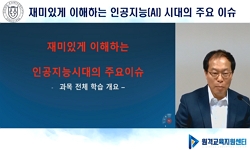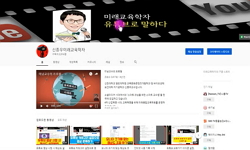This article focuses on copyright infringement problems that occur in the process of creating and using artificial intelligence (AI) creations. In particular, using learned artificial intelligence (AI) generated through deep learning, (1) when general...
http://chineseinput.net/에서 pinyin(병음)방식으로 중국어를 변환할 수 있습니다.
변환된 중국어를 복사하여 사용하시면 됩니다.
- 中文 을 입력하시려면 zhongwen을 입력하시고 space를누르시면됩니다.
- 北京 을 입력하시려면 beijing을 입력하시고 space를 누르시면 됩니다.

인공지능 창작물 관련 저작권 침해 쟁점 = Copyright infringement issues related to artificial intelligence creations
한글로보기부가정보
다국어 초록 (Multilingual Abstract)
In particular, using learned artificial intelligence (AI) generated through deep learning, (1) when general users create AI creations, and (2) when general users create creations through platform services, we are considering issues under copyright law centered on users and platforms (OSPs).
In specific cases, we examine copyright issues, (ⅰ) focusing on copyright infringement on joint creations caused by collaboration between humans, and (ⅱ) focusing on the issue of copyright infringement related to the choreography of "MADI," an AI choreography made with deepfake technology, and (ⅲ) focusing on the criminal regulation issues of so-called author's false representation contents under the copyright law.
In the future, the issue of copyright infringement of users and platforms related to the creations produced by strong AI will be expanded. There will be a number of unanticipated challenges there.
Assuming the current level of weak AI, it is difficult to see it as a "new" technology or phenomenon that has a great influence on the current copyright law because such humans only use AI as a tool in the creative process.
In short, it is necessary to establish the principle of copyright infringement related to AI by continuously tracking the level and degree of development of AI technology in the future. In particular, I think it is a future task to find copyright issues related to creations created by strong AI and legal principles related to infringement under the copyright law.
This article focuses on copyright infringement problems that occur in the process of creating and using artificial intelligence (AI) creations.
In particular, using learned artificial intelligence (AI) generated through deep learning, (1) when general users create AI creations, and (2) when general users create creations through platform services, we are considering issues under copyright law centered on users and platforms (OSPs).
In specific cases, we examine copyright issues, (ⅰ) focusing on copyright infringement on joint creations caused by collaboration between humans, and (ⅱ) focusing on the issue of copyright infringement related to the choreography of "MADI," an AI choreography made with deepfake technology, and (ⅲ) focusing on the criminal regulation issues of so-called author's false representation contents under the copyright law.
In the future, the issue of copyright infringement of users and platforms related to the creations produced by strong AI will be expanded. There will be a number of unanticipated challenges there.
Assuming the current level of weak AI, it is difficult to see it as a "new" technology or phenomenon that has a great influence on the current copyright law because such humans only use AI as a tool in the creative process.
In short, it is necessary to establish the principle of copyright infringement related to AI by continuously tracking the level and degree of development of AI technology in the future. In particular, I think it is a future task to find copyright issues related to creations created by strong AI and legal principles related to infringement under the copyright law.
국문 초록 (Abstract)
구체적 사례에서는 (ⅰ) 인간과 「인공지능」의 협업에 따른 공동창작물에 대한 저작권 침해 문제, (ⅱ) 딥페이크 기술로 만들어진 AI 안무가 '마디'(MADI)의 안무 관련 저작권 침해 문제, (ⅲ) 이른바 ‘참칭(僭稱) 콘텐츠’의 저작권법상 형사적 규제 문제를 중심으로 저작권 쟁점을 검토하고 있다.
향후 더욱 강한 AI가 생성한 창작물에 관련한 이용자와 플랫폼의 저작권 침해 문제가 확대될 수 있을 것이다. 거기서는 현재 상정되어 있지 않은 다수의 과제가 등장할 것이다.
현재 수준의 약한 AI라면 결국 그러한 인간이 창작과정에 AI를 도구로써 활용하는 것에 불과하므로 현행 저작권법에 큰 영향을 가져오는 「새로운」기술 내지 현상이라고 보기 어렵다고 생각한다.
요컨대 앞으로 AI기술의 발전 수준과 정도를 계속적으로 추적하여 AI 관련한 저작권 침해의 법리를 구축하는 것이 필요하다. 특히 강한 AI가 생성하는 창작물과 관련한 저작권 쟁점과 저작권법상 대응방안을 강구하는 것이 앞으로의 과제라고 생각한다.
본고에서는 인공지능(AI) 창작물의 생성과 이용과정에서 발생하는 저작권 침해 문제를 중심으로 살핀다. 특히 심층학습을 통해 생성된 학습된 인공지능을 이용하여 일반 이용자가 AI 창작물...
본고에서는 인공지능(AI) 창작물의 생성과 이용과정에서 발생하는 저작권 침해 문제를 중심으로 살핀다. 특히 심층학습을 통해 생성된 학습된 인공지능을 이용하여 일반 이용자가 AI 창작물을 만드는 경우와, 또 일반이용자가 플랫폼 서비스를 통해 학습된 AI를 이용하여 창작물을 만드는 경우와 관련하여, 이용자와 플랫폼(OSP)을 중심으로 한 저작권법상 쟁점이 검토할 대상이다.
구체적 사례에서는 (ⅰ) 인간과 「인공지능」의 협업에 따른 공동창작물에 대한 저작권 침해 문제, (ⅱ) 딥페이크 기술로 만들어진 AI 안무가 '마디'(MADI)의 안무 관련 저작권 침해 문제, (ⅲ) 이른바 ‘참칭(僭稱) 콘텐츠’의 저작권법상 형사적 규제 문제를 중심으로 저작권 쟁점을 검토하고 있다.
향후 더욱 강한 AI가 생성한 창작물에 관련한 이용자와 플랫폼의 저작권 침해 문제가 확대될 수 있을 것이다. 거기서는 현재 상정되어 있지 않은 다수의 과제가 등장할 것이다.
현재 수준의 약한 AI라면 결국 그러한 인간이 창작과정에 AI를 도구로써 활용하는 것에 불과하므로 현행 저작권법에 큰 영향을 가져오는 「새로운」기술 내지 현상이라고 보기 어렵다고 생각한다.
요컨대 앞으로 AI기술의 발전 수준과 정도를 계속적으로 추적하여 AI 관련한 저작권 침해의 법리를 구축하는 것이 필요하다. 특히 강한 AI가 생성하는 창작물과 관련한 저작권 쟁점과 저작권법상 대응방안을 강구하는 것이 앞으로의 과제라고 생각한다.
참고문헌 (Reference)
1 박성호, "텍스트 및 데이터 마이닝을 목적으로 하는 타인의 저작물의 수집·이용과 저작재산권의 제한 - 인공지능의 빅데이터 활용을 중심으로 -" 대한변호사협회 (494) : 39-69, 2020
2 정상조, "지식재산권법" 홍문사 2020
3 차상육, "저작권법상 인공지능 학습용 데이터셋의 보호와 쟁점 ―텍스트·데이터마이닝(TDM) 면책규정을 중심으로―" 한국경영법률학회 32 (32): 1-55, 2021
4 박성호, "저작권법상 방송⋅전송⋅디지털음성송신 관련 쟁점의 재검토 - 키메라의 권리, 디지털음성송신권의 생성 및 전개에 관한 비판적 고찰을 중심으로 -" 한국정보법학회 21 (21): 67-109, 2017
5 이해완, "저작권법" 박영사 2015
6 윤태식, "저작권법" 박영사 2020
7 오승종, "저작권법" 박영사 2016
8 한지영, "일명 ‘표지갈이’ 사건에서의 부정발행죄 적용범위에 관한 고찰" 한국저작권위원회 29 (29): 193-216, 2016
9 정상조, "인공지능시대의 저작권법 과제" 한국저작권위원회 31 (31): 37-72, 2018
10 차상육, "인공지능 창작물의 저작권법상 보호 쟁점에 대한 개정방안에 관한 연구" 한국저작권위원회 33 (33): 5-69, 2020
1 박성호, "텍스트 및 데이터 마이닝을 목적으로 하는 타인의 저작물의 수집·이용과 저작재산권의 제한 - 인공지능의 빅데이터 활용을 중심으로 -" 대한변호사협회 (494) : 39-69, 2020
2 정상조, "지식재산권법" 홍문사 2020
3 차상육, "저작권법상 인공지능 학습용 데이터셋의 보호와 쟁점 ―텍스트·데이터마이닝(TDM) 면책규정을 중심으로―" 한국경영법률학회 32 (32): 1-55, 2021
4 박성호, "저작권법상 방송⋅전송⋅디지털음성송신 관련 쟁점의 재검토 - 키메라의 권리, 디지털음성송신권의 생성 및 전개에 관한 비판적 고찰을 중심으로 -" 한국정보법학회 21 (21): 67-109, 2017
5 이해완, "저작권법" 박영사 2015
6 윤태식, "저작권법" 박영사 2020
7 오승종, "저작권법" 박영사 2016
8 한지영, "일명 ‘표지갈이’ 사건에서의 부정발행죄 적용범위에 관한 고찰" 한국저작권위원회 29 (29): 193-216, 2016
9 정상조, "인공지능시대의 저작권법 과제" 한국저작권위원회 31 (31): 37-72, 2018
10 차상육, "인공지능 창작물의 저작권법상 보호 쟁점에 대한 개정방안에 관한 연구" 한국저작권위원회 33 (33): 5-69, 2020
11 전응준, "인공지능 관련 저작권 침해 및 대응" 2021
12 정진근, "영국 CDPA 제9조 제3항은 인공지능 창작을 보호하는가?" 한국저작권위원회 33 (33): 5-40, 2020
13 김찬솔, "신규 저작권 침해유형 및 이슈 - 딥 페이크와 저작권 침해" 한국저작권보호원 2021
14 차상육, "빅데이터의 지적재산법상 보호" 법조협회 67 (67): 71-148, 2018
15 서달주, "바둑의 기보도 저작물인가" 저작권심의조정위원회 2006
16 운 박 ; 정연덕, "머신러닝에서 저작권 침해 검토" 한국저작권위원회 34 (34): 81-110, 2021
17 이상정, "기보와 저작권법" 한국스포츠엔터테인먼트법학회 10 (10): 43-65, 2007
18 知的財産戰略本部, "新た な情報財検討委員会報告書- データ・人工知能(AI)の利活用促 進による産業競争力強化の基盤となる知財システムの構築に向け て−」" 2017
19 岩坪哲, "平成30年著作権法改正 「柔軟な権利制限規定」" 日本弁理士会 73 (73): 2020
20 전수정, "[저작권법으로 세상 읽기]딥페이크의 저작권 이슈"
21 차상육, "[사건과 판례] ‘표지갈이’의 부정발행 등의 죄 성립여부" 한국저작권위원회 (280) : 2017
22 Christophe Geiger, "The Exception for Text and Data Mining (TDM) in the Proposed Directive on Copyright in the Digital Single Market - Legal Aspects" Centre for International Intellectual Property Studies (CEIPI) 2018
23 Séverine Dusollier, "The 2019 Directive on Copyright in the Digital Single Market: Some progress, a few bad choices, and an overall failed ambition" 57 (57): 2020
24 Pawel Kamocki, "New exceptions for Text and Data Mining and their possible impact on the CLARIN infrastructure" 2018
25 Ralph D. Clifford, "Intellectual Property in the Era of the Creative Computer Program : Will the True Creator Please Stand Up" 71 : 1675-1684, 1997
26 Shlomit Yanisky-Ravid, "Generating Rembrandt: Artificial Intelligence, Copyright, and Accountability in the 3A Era—The Human- Like Authors are Already Here—A New Model" 2017 : 659-, 2017
27 James Grimmelmann, "Copyright for Literate Robots" 101 : 657-, 2015
28 Annemarie Bridy, "Coding Creativity: Copyright and the Artificially Intelligent Author" 5 : 2012
29 福岡眞之介, "AIの法律と論点" 商事法務 2018
동일학술지(권/호) 다른 논문
-
대표이사의 전단적 대표행위에 대한 회사의 책임을 인정하기 위한 요건
- 한국경영법률학회
- 김동민
- 2022
- KCI등재
-
- 한국경영법률학회
- 김현숙
- 2022
- KCI등재
-
인사고과 및 승격 누락의 ‘계속하는 행위’ 해당 여부 - 대전지방법원 2022.2.15. 선고 2020구합104971, 2020구합104933(병합) 판결을 중심으로 -
- 한국경영법률학회
- 김희성
- 2022
- KCI등재
-
메타버스 플랫폼 사업자의 OSP 책임에 관한 소고 — Web 3.0 시대 UGC의 특성을 기반으로 한 판단기준의 검토 —
- 한국경영법률학회
- 정원준
- 2022
- KCI등재




 KCI
KCI






